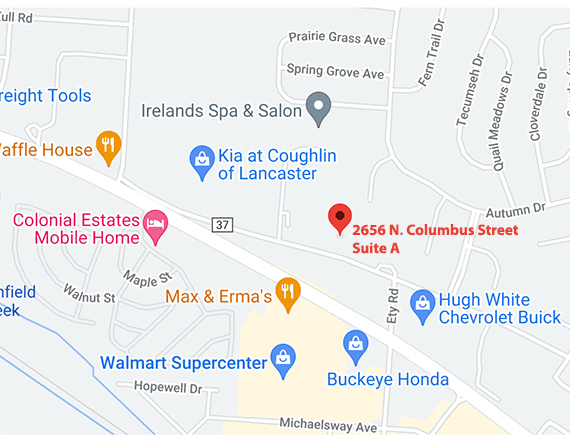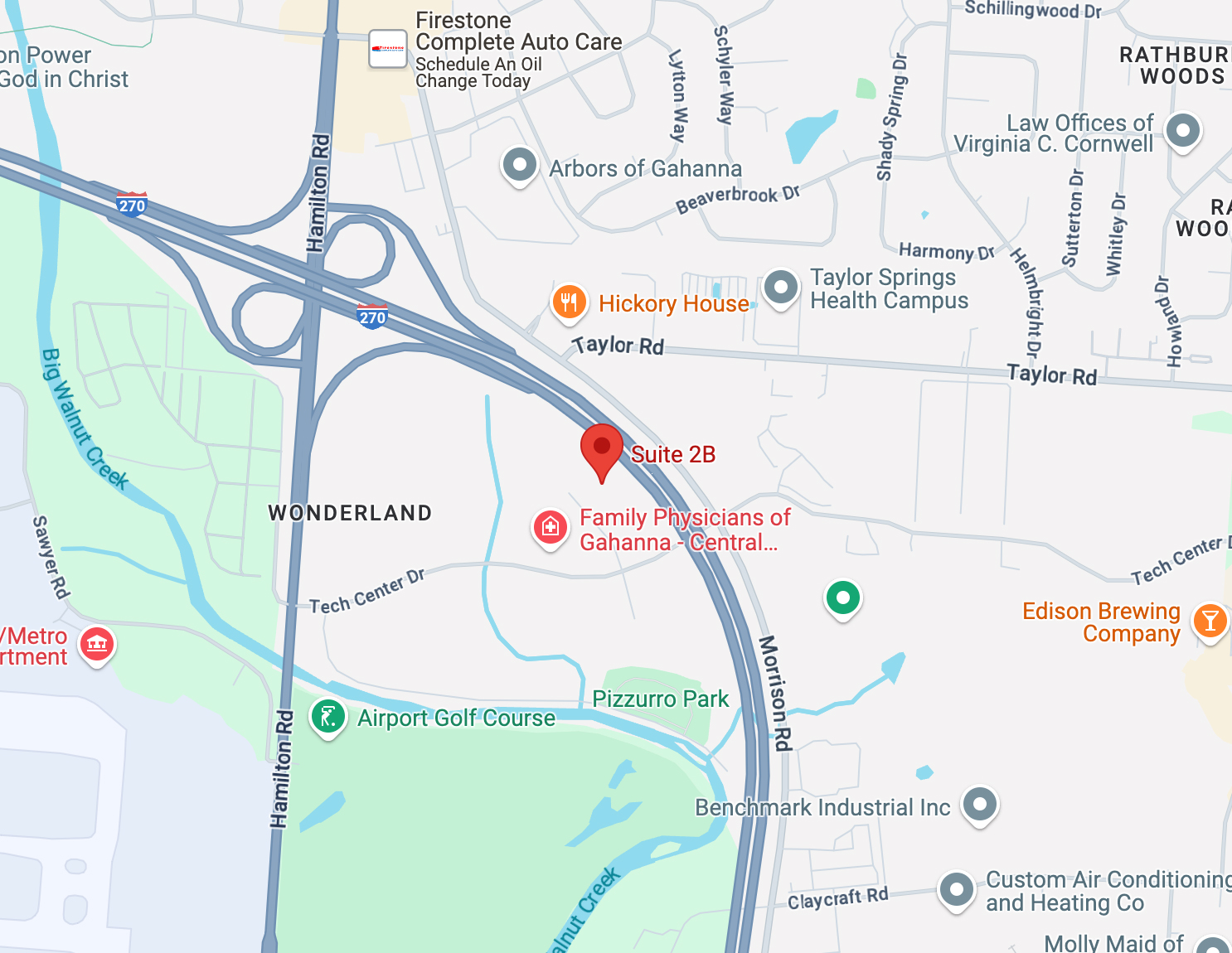Body Contouring After Weight Loss Q&A
Conveniently located to serve Columbus, Lancaster, Pickerington, and Canal Winchester
Jump To
Q: What are the most common surgical options for body contouring after massive weight loss?
A: Surgery can be done to contour any area of the body that bothers you. The most common treatment areas are the abdomen, breasts, arms, legs and face. The tradeoff is scars which plastic surgeons try to make as inconspicuous as possible. There are several options to improve each of these body regions, depending upon your specific needs:
Abdomen
- Belt Lipectomy/Lower Body lift – addresses loose skin around the abdomen, waist and buttocks. Abdominal muscles are tightened from the ribs to the pubis.
- Abdominoplasty – removes excess skin from the upper and lower abdomen and tightens the abdominal muscles. It typically leaves a scar that can be hidden in the bikini line.
- Fleur-de-lis Abdominoplasty – Similar to the Abdominoplasty, but adds a vertical component to enable additional skin tightening of the central abdomen
- Panniculectomy – Removes hanging apron of skin from the lower abdomen. May sometimes be covered by insurance.
Breasts
- Mastopexy (Breast lift) – Skin is repositioned to lift and reshape the breasts while preserving breast volume.
- Breast Reduction – Excess skin and breast tissue are removed to lighten, lift and reshape the breast. May sometimes be covered by insurance.
- Breast Augmentation – Saline or Silicone Implants are placed beneath the breast and chest muscle to restore volume to the breasts. This is sometimes done along with a breast lift or reduction.
- Male Breast Reduction and Upper Body Lift – Excess skin and tissue are removed from the chest and lateral chest wall.
Arms & Legs
- Brachioplasty – Remove excess skin on the arms, which is sometimes known as “bat wings.” Scar in the biceps groove.
- Thighplasty – Remove excess skin between the thighs that rubs together
- Liposuction – Remove residual pockets of excess fat along the thighs, flanks and arms
Face
- Facelift, Necklift, Browlift, Blepharoplasty (Eyelid lift) – Sagging skin is lifted on specific areas of the face.
Q: What is considered massive weight loss?
A: According to the American Society for Metabolic and Bariatric Surgery, “massive weight loss” is considered the loss of at least 100 pounds or more than 40% of your excess weight, which is usually achieved through bariatric surgery, lap band surgery or though diet and exercise. Body-contouring after massive weight loss involves the removal of loose, excess skin, which is resistant to diet and exercise. Through surgery we can tighten these areas to help contour the skin to fit your new body and help better reflect the results of your weight loss.
Q: Why won’t my skin just snap back to fit my thinner body without surgery?
A: Your skin contains elastin fibers that help the skin stretch, move and adapt to changes in weight. Although skin tends to contour to your body, when you have rapid weight loss or gain, you lose elasticity, much like a rubber band loses its snap after time and use. Although your skin tightens some with weight loss, it is unlikely that it will fully recover. Despite exercise, there will likely be some areas of skin laxity after this degree of weight loss without body contouring surgery.
Q: How long do I have to wait after my weight loss surgery to have the reconstructive surgery?
A: I generally recommend that you Request a Consultation about 12-18 months after your bariatric surgery when your weight loss begins to plateau. You are welcome to consult with me earlier, as it helps many patients to have a surgical plan and for others, it helps incentivize their weight loss. If you are attempting to have surgery covered by insurance (see below) your insurance company may have specific requirements about how long you have to wait before body contouring surgeries.
Q: What else do I have to do before having body contouring surgery?
A: Aside from reaching a stable weight, you should be in stable medical health – you will need clearance from your bariatric surgeon or primary care physician. You should also have all nutritional and metabolic issues related to the weight loss surgery under control. To minimize the risks of having wound healing issues after surgery, you must avoid tobacco and nicotine in all forms for at least 4 weeks before and after surgery and have good overall nutrition with high protein intake. Additionally, you need to make sure you have realistic expectations for this surgery.
Q: Does my insurance cover body contouring after bariatric surgery or other weight loss surgeries like the lap band?
A: All insurance plans are different. We recommend you call the phone number on the back of your insurance card and to check coverage and benefits for your particular plan, as some plans specifically exclude post-bariatric reconstruction. In our experience, insurance companies only cover body contouring, when there is sufficient documentation of problems, such as rashes, skin breakdown requiring powders, creams and antibiotics. Other problems, such as chafing, trouble fitting into clothing, difficulty participating in activities or a general disappointment with your skin’s appearance are generally not sufficient to secure insurance coverage for this type of surgery.
For specific areas of the body, insurance may sometimes cover a panniculectomy (removal of skin of the lower part of the abdomen) or breast reduction. It is much less common for insurance to cover breast, thigh or arm lifts, or treatments of the upper abdomen or back. We have never seen insurance cover facelift, breast augmentation or minimally invasive procedures such as Tripollar Apollo.
Q: What do I do if my insurance does not cover my surgery? How much does body contouring cost?
A: If your insurance company does not approve your surgery, even after an appeal, then we will discuss the specific costs associated with surgery at your consultation. Dr. Lichten will work with you to come up with the best treatment plan for your specific complaints. For patients who choose to finance their surgeries, we will discuss different options with you.
Q: How much surgery can be done at once?
A: You and Dr. Lichten will discuss your specific surgical goals and together you can come up with a treatment plan. In general, we try to address 2 or 3 areas at a time. These surgeries can be done in any order depending on your wishes. Additional surgeries can be scheduled after at least 2-3 months.
Q: What is the recovery like? What is my downtime?
A: Although every patient’s experience is different, generally you can expect about 2-3 days of pain, 2-3 weeks tapering off the pain medication and resumption of regular activities. In 4-6 weeks, you should be able to resume lifting and regular activity. You should “feel like yourself” after 2-3 months.
For some procedures or combination of procedures, you may spend one or two nights in the hospital, or you may go home the day of surgery. You will most likely have drains in place which you will take care of at home (we will show you how) for a couple of weeks after surgery.
Q: What are the risks of body contouring after massive weight loss surgery?
A: Every surgery carries with it risks and potential benefits and this type of surgery is no different. The most common risks include bleeding, infection and scarring. All surgery has scars which are permanent, but my patients generally feel are worth the tradeoff for removing the excess skin. We will go over the other, less common, risks before surgery.
Q: Are there other options that don’t involve surgery?
A: Diet and exercise are incredibly important, but often patients are left with loose skin that only surgery can remove. We are able to offer our patients skin tightening using the Apollo Tripollar. Through enhanced generation of new collagen and tightening existing collagen, the Apollo treats loose jowls, sagging skin under the chin (“turkey neck”), wrinkles and fine lines, and generally tones and lifts the face. Although not specifically addressed by the FDA for body contouring, the Apollo has been used around the world on the body with amazing results. We offer the Tripollar to our body contouring patients as both a stand-alone treatment, and in conjunction with surgery. Although the TriPollar results are not the same as what we can achieve with surgery, many patients have found a benefit from these treatments, which can be started much earlier while you are still losing weight.
Q: What qualifications should I look for in a reconstructive surgeon?
A: You want to start with a surgeon who is board certified in plastic surgery. From there, make sure s/he seems like someone whom you can trust and with whom you feel comfortable. S/he should also have good experience with body contouring procedures after bariatric surgery and be able to work with you and your bariatric surgeon to get you optimal results.



